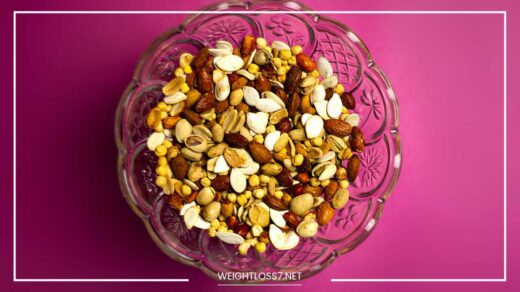How to Reduce Stomach Fat

Reduce Stomach Fat
Shedding the Spare Tire: Effective Strategies for Reducing Stomach Fat
Stomach fat, also known as visceral fat, can be a stubborn adversary in the quest for a healthier you. While a small amount of padding is a normal part of the body’s anatomy, excess belly fat carries significant health risks.
It increases your chances of developing conditions like heart disease, type 2 diabetes, even some cancers.
The good news? You can fight back! Here, we’ll delve into proven methods to reduce stomach fat and improve your overall well-being. We’ll explore dietary strategies, exercise routines, lifestyle tweaks, and additional tips to equip you for success.
Diet: Fueling Your Fat-Burning Furnace
What you eat plays a central role in belly fat reduction. Here are key dietary strategies to consider, along with explanations for their effectiveness:
-
Become Label Savvy: Processed foods and sugary drinks are loaded with hidden calories and unhealthy fats. Often, they are designed to be hyper-palatable, meaning they trigger cravings and overconsumption. Learn to read food labels meticulously. Prioritize whole, unprocessed foods like fruits, vegetables, whole grains, and lean proteins. These foods are packed with nutrients and fiber, keeping you feeling fuller for longer and promoting satiety.
-
Tame the Carbs, Especially Refined Ones: Refined carbohydrates, found in white bread, pastries, sugary cereals, and white rice, cause blood sugar spikes. These spikes trigger the release of insulin, a hormone that promotes fat storage. Consider reducing refined carbs and focus on complex carbs like whole grains, including brown rice, quinoa, and whole-wheat bread. Complex carbs provide sustained energy, regulate blood sugar levels, and keep you feeling fuller for longer.
-
Befriend Fiber: Fiber is your gut’s best friend. It promotes feelings of fullness by slowing down digestion and adding bulk to your meals. Fiber may even aid in burning belly fat by promoting the growth of beneficial gut bacteria. Load up on fruits, vegetables, legumes (beans, lentils), and whole grains to increase your fiber intake.
-
Prioritize Protein: Protein helps build and maintain muscle mass, which boosts metabolism and aids in fat burning. Muscle tissue burns more calories at rest than fat tissue, so increasing your muscle mass can help you burn more calories throughout the day. Include lean protein sources like fish, chicken, beans, lentils, and tofu in your diet. Aim for 0.8-1 gram of protein per kilogram of body weight daily.
-
Healthy Fats are Your Ally: Don’t shy away from healthy fats like those found in avocados, nuts, seeds, and olive oil. These fats promote satiety, improve heart health, and may even help reduce belly fat. Healthy fats can help regulate blood sugar levels, reducing cravings and preventing overeating.
-
Mindful Eating: Practice mindful eating by paying attention to hunger cues and avoiding distractions while eating. Put away your phone, turn off the TV, and focus on the food in front of you. Savor your food, chew thoroughly, and stop eating when you’re comfortably full, not stuffed. Mindful eating allows you to recognize satiety cues and avoid overconsumption.
-
Portion Control is Key: It’s easy to underestimate portion sizes, especially when eating out or mindlessly snacking. Use smaller plates, measure your food using measuring cups or spoons, and avoid distractions while eating. You can also try the “MyPlate” method, which visually divides your plate into sections for fruits, vegetables, whole grains, and lean protein, helping you ensure balanced portions.
Move It or Lose It: The Power of Exercise for Belly Fat Reduction
Diet alone might not be enough. Exercise is a crucial partner in the fight against stomach fat. Here’s how to incorporate physical activity for optimal results:
-
Embrace Cardio: Aim for at least 150 minutes of moderate-intensity aerobic exercise or 75 minutes of vigorous-intensity cardio each week, as recommended by the Centers for Disease Control and Prevention (CDC). This translates to roughly 30 minutes of moderate-intensity exercise most days of the week. Activities like brisk walking, running, swimming, cycling, dancing, or jumping rope are great options. Cardio helps you burn calories and build endurance.
-
The HIIT Advantage: High-Intensity Interval Training (HIIT) has gained popularity for its effectiveness in burning calories and belly fat. HIIT involves alternating short bursts of intense exercise with periods of rest or low-intensity activity. For example, you could sprint for 30 seconds followed by a minute of walking, repeated for a total of 20-30 minutes. HIIT workouts are generally shorter than traditional cardio sessions, making them a time-efficient option, and research suggests they may be particularly effective for reducing belly fat.
-
Strength Training Matters: Don’t underestimate the power of strength training. Building muscle mass increases your metabolic rate, helping you burn more calories even at rest. This is known as the afterburn effect. Include bodyweight exercises like squats, lunges, push-ups, planks, and rows in your routine. You can also use weights, resistance bands, or exercise machines for a more challenging workout. Aim for strength training exercises that target all major muscle groups at least twice a week.
- Find Activities You Enjoy: Consistency is key. The best exercise program is the one you’ll stick with. Choose exercises you enjoy, so you’re more likely to make them a regular part of your routine. Explore different activities like hiking, biking, swimming, dancing, or team sports. Find something that keeps you engaged and motivated.
Lifestyle Tweaks for a Flatter Belly
Beyond diet and exercise, some lifestyle changes can support your belly fat reduction efforts:
-
Prioritize Sleep: When you’re sleep-deprived, your body produces more cortisol, a stress hormone linked to increased belly fat storage. Aim for 7-8 hours of quality sleep each night. Develop a relaxing bedtime routine, create a sleep-conducive environment, and limit screen time before bed.
-
Manage Stress: Chronic stress can wreak havoc on your health, promoting belly fat accumulation. Find healthy ways to manage stress, such as yoga, meditation, deep breathing exercises, spending time in nature, listening to calming music, or spending time with loved ones.
-
Stay Hydrated: Drinking plenty of water throughout the day is crucial for overall health and may also aid in reducing belly fat. Water helps your body function optimally, promotes feelings of fullness, and can even boost metabolism. Aim for 8-10 glasses of water daily.
-
Limit Alcohol Consumption: Alcohol is high in calories and can contribute to belly fat storage. Be mindful of your alcohol intake and consider limiting it or eliminating it altogether. If you do choose to drink alcohol, opt for moderate consumption, such as one glass of wine or beer per day.
-
Cook More at Home: Cooking at home allows you to control the ingredients and portion sizes of your meals. When eating out, choose restaurants with healthy options and be mindful of portion sizes.
-
Read Food Labels: Pay attention to added sugars and hidden fats in processed foods. Look for products with lower sugar and fat content.
-
Plan Your Meals: Planning your meals and snacks in advance can help you make healthy choices and avoid unhealthy temptations.
-
Find a Support System: Having a support system can make a big difference in your weight loss journey. Share your goals with friends and family, find a workout buddy, or join a weight loss support group. The encouragement and accountability of others can be invaluable.
Additional Tips for Success
-
Consult a Healthcare Professional: Before starting any new diet or exercise program, especially if you have any underlying health conditions, consult with a doctor or registered dietitian for personalized guidance. They can help you create a safe and effective plan for reducing stomach fat and improving your overall health.
-
Explore Resources: There are numerous resources available online and in libraries that offer detailed information on healthy eating, exercise routines, and belly fat reduction strategies. Reliable sources include government websites like the National Institute of Diabetes and Digestive and Kidney Diseases, reputable health organizations, and peer-reviewed research studies.
-
Be Patient and Kind to Yourself: Losing stomach fat takes time and commitment. Don’t get discouraged by setbacks. Celebrate your progress, no matter how small, and focus on developing healthy habits that you can maintain for the long term. Remember, even small changes can make a big difference in your health.
-
Track Your Progress: Keeping a food diary or using a fitness tracker can help you monitor your progress and stay motivated. You can track your calorie intake, exercise routines, and measurements like weight and waist circumference.
-
Make Sustainable Changes: Aim for long-term lifestyle changes rather than quick fixes. Focus on developing healthy eating habits, incorporating regular exercise into your routine, and making positive lifestyle choices for lasting results.
Remember, reducing stomach fat is about more than just aesthetics. It’s about improving your overall health and reducing your risk of chronic diseases. By incorporating these evidence-based strategies into your life, you can take control of your health and achieve a flatter belly and a healthier you.
Advanced Strategies for Stubborn Belly Fat
While the core principles of diet, exercise, and lifestyle modifications apply to everyone, some individuals might find belly fat particularly stubborn. Here, we’ll explore some advanced strategies that can help you target belly fat and break through plateaus:
Dietary Strategies for Belly Fat Reduction
-
Consider Intermittent Fasting: Intermittent fasting (IF) involves cycling between periods of eating and fasting. Research suggests it may be effective for reducing belly fat. There are various IF protocols, such as the 16/8 method (fasting for 16 hours and eating within an 8-hour window) or the 5:2 method (eating normally for 5 days and restricting calories on 2 non-consecutive days). Consult a doctor before starting IF, especially if you have any underlying health conditions.
-
Explore the Mediterranean Diet: The Mediterranean diet emphasizes fruits, vegetables, whole grains, legumes, healthy fats like olive oil, and moderate amounts of fish and poultry. Research suggests it may be beneficial for reducing belly fat and improving overall heart health.
-
Increase Your Intake of Prebiotics and Probiotics: Prebiotics are fibers that feed the good bacteria in your gut, while probiotics are live bacteria that offer health benefits. A healthy gut microbiome has been linked to reduced belly fat storage. Consider incorporating prebiotic-rich foods like onions, garlic, asparagus, and chicory root, and probiotic-rich foods like yogurt, kefir, and kimchi into your diet.
-
Consider Targeted Supplements: Some supplements, like green tea extract and conjugated linoleic acid (CLA), may offer modest benefits for belly fat reduction. However, research is ongoing, and the effectiveness can vary. Consult a doctor before taking any supplements.
Exercise Strategies for Targeting Belly Fat
-
Increase Resistance Training Intensity: While strength training is beneficial overall, consider incorporating more challenging resistance training exercises into your routine. Lifting heavier weights with fewer repetitions can stimulate greater muscle growth and boost metabolism.
-
Incorporate Core Strengthening Exercises: While overall strength training is crucial, don’t neglect exercises that target your core muscles. Exercises like planks, side planks, Russian twists, and crunches can help strengthen your abdominal muscles and improve core stability.
-
Focus on Compound Exercises: Compound exercises, like squats, deadlifts, lunges, and rows, work multiple muscle groups simultaneously. This burns more calories and promotes greater muscle growth, leading to a higher metabolism.
-
Explore Advanced Training Techniques: Techniques like supersets (performing two exercises back-to-back with minimal rest) and drop sets (gradually decreasing the weight during a single set) can increase the intensity of your workouts and potentially enhance belly fat reduction.
Lifestyle Tweaks for Extra Support
-
Manage Stress More Effectively: Chronic stress can significantly hinder your weight loss efforts. If basic stress management techniques like meditation and deep breathing aren’t enough, consider seeking professional help from a therapist or counselor.
-
Improve Sleep Quality: Aim for not just enough sleep (7-8 hours) but also good quality sleep. Ensure a cool, dark, and quiet sleep environment, establish a regular sleep schedule, and avoid caffeine and electronics close to bedtime.
-
Get Regular Checkups: Schedule regular checkups with your doctor to monitor your progress and address any underlying health conditions that might be contributing to belly fat storage.
-
Be Mindful of Environmental Toxins: Some environmental toxins, like endocrine disruptors, can interfere with hormones and metabolism, potentially impacting belly fat storage. While you can’t completely eliminate exposure, be mindful of common sources like plastics and certain cleaning products.
Final Word
Reducing stomach fat requires a multi-faceted approach. By combining dietary strategies, exercise routines, and healthy lifestyle modifications, you can achieve significant results.
Remember, consistency is key. Celebrate your progress, stay motivated, and don’t be afraid to seek professional guidance for personalized support. With dedication and the right approach, you can achieve a flatter belly and a healthier you.

















